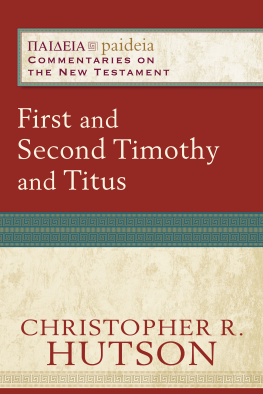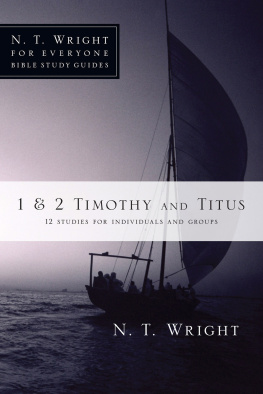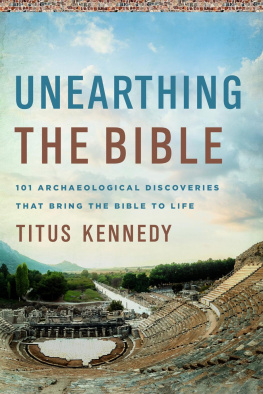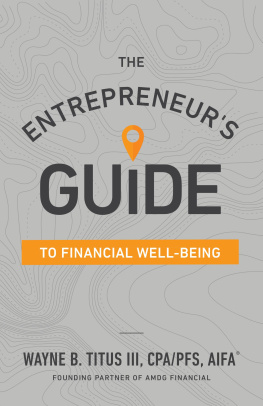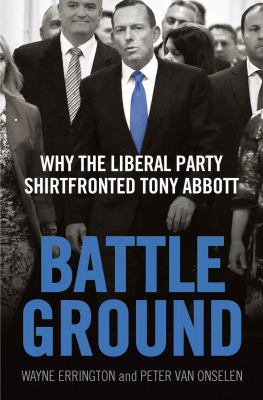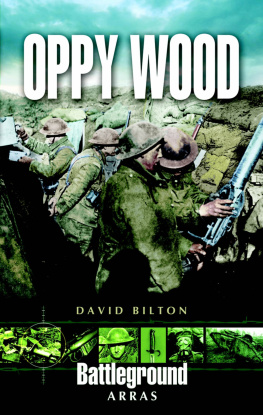This book was published with the assistance of the THORNTON H. BROOKS FUND of the University of North Carolina Press.
2011 The University of North Carolina Press All rights reserved Designed by Richard Hendel Set in Quadraat type by Tseng Information Systems, Inc. Manufactured in the United States of America
The paper in this book meets the guidelines for permanence and durability of the Committee on Production Guidelines for Book Longevity of the Council on Library Resources.
The University of North Carolina Press has been a member of the
Green Press Initiative since 2003.
Library of Congress Cataloging-in-Publication Data
Titus, Jill Ogline
Browns battleground : students, segregationists, and the struggle
for justice in Prince Edward county, Virginia / Jill Ogline Titus.
p. cm.
Includes bibliographical references and index.
ISBN 978-0-8078-3507-4 (cloth : alk. paper) 1. School integrationVirginiaPrince Edward County. 2. Educational equalizationVirginiaPrince Edward County. 3. Public schoolsVirginiaPrince Edward County. 4. African American studentsVirginiaPrince Edward County. 5. Civil rights movementsVirginiaPrince Edward County. 6. Brown, Oliver, 19181961Trials, litigation, etc. I. Title.
LC214.22.V8T58 2011
379.2609755632dc22
2011015091
A portion of this book appeared, in somewhat different form, as Farmville 1963: The Long Hot Summer in The Educational Lockout of African Americans in Prince Edward County, Virginia (19591964): Personal Accounts and Reflections, edited by Terence Hicks and Abul Pitre (Lanham, Md.: University Press of America, 2010), 3345. Used by permission.
15 14 13 12 11 5 4 3 2 1
ILLUSTRATIONS & MAPS
ILLUSTRATIONS
R. R. Moton High School, exterior
R. R. Moton High School, interior
Farmville High School
Doctors office, Farmville
L. F. Griffin and students in front of Moton High School
Bill Bagwell and students
L. F. Griffin and students
Students at bus station
Students with host family
Prince Edward Academy
No Trespassing sign
Abandoned buses
MAPS
Virginia
Prince Edward County
ACKNOWLEDGMENTS
As everyone knows, writing a book is hardly a solitary process. I am delighted to have an opportunity to acknowledge the many people who helped to make this project possible.
My fascination with Prince Edward County began almost ten years ago, while I was an intern in the National Park Services Northeast Regional Office. Over the course of my work with the National Historic Landmarks Program, I ran across a property with a story I couldnt forget. The landmark, of course, was Robert R. Moton High School, and I will always be grateful to Bill Bolger and Catherine Turton for introducing me to Prince Edwards tumultuous history.
Over the course of this project, Max Page, Franoise Hamlin, Thomas Hilbink, and John Bracey carefully read much of the manuscript, drawing upon their rich knowledge of the twentieth-century black freedom struggle to point me in many new directions. Im thankful for their time, their thoughtful feedback, and their investment in the project. I am also grateful to Franoise for nurturing my growing interest in childrens history, and to Max for giving me a timely push to begin searching for a publisher.
I was lucky enough to get my education as a historian in one of the most collegial graduate programs in the nation. The Department of History at the University of Massachusetts Amherst is a place characterized by real intellectual community. I am grateful to David Glassberg, Heather Cox Richardson, Laura Lovett, and Manisha Sinha for their much-appreciated support over the years. Though her scholarly interests are quite different from my own, I would not be where I am without Marla Miller, a superb teacher and generous friend.
Alan Winquist, Bill Ringenberg, Tom Jones, and Robert Moore-Jumonville all helped me to get a start in scholarship. Their passion for understanding the past taught me that writing and teaching can be a form of service. Steve Messer taught African American history with a passion that was contagious and a rigor that well prepared me for graduate school. His class changed my life, and I am honored to call him a mentor and a friend.
I am grateful to Kevin Boyle of Ohio State University, Brent Tarter of the Library of Virginia, and the anonymous readers for the University of North Carolina Press for their careful reading of the manuscript. Their suggestions have greatly improved the final product; any errors that remain are, of course, my own. Chuck Grench, Beth Lassiter, and Paul Betz of the University of North Carolina Press have been enormously patient with a first-time author, and they have made my first publishing experience a pleasant one.
Special thanks go to Jean Fairfax, Rev. Everett Berryman Jr., Rev. James Samuel Williams Jr., and Dr. Edward H. Peeples Jr., who made time in their busy schedules to share both their experiences in Prince Edward County and their reflections on the legacy of the crisis. Lacy Ward and the staff of the Robert R. Moton Museum have been unfailingly helpful throughout an enormously busy period in the museums life. I am delighted that this book follows on the heels of the groundbreaking Moton 2011 exhibit, which provides visitors a complete overview of the school-closing crisis in the building that launched the crusade for change.
Don Davis and Jack Sutters of the American Friends Service Committee Archives and Lucious Edwards Jr. of the Virginia State University Archives deserve special recognition for scouring their collections for any materials relevant to this topic. I am also indebted to Lydia Williams at Longwood Universitys Janet Greenwood Library and Jim Gwin at the University of Richmonds Boatwright Memorial Library, as well as the always-helpful staff of the Library of Virginia, the Virginia Historical Society, and the University of Virginias Small Special Collections Library. Washington Colleges interlibrary loan specialist, Carol Van Veen, has my everlasting thanks for speedily tracking down countless obscure publications.
Washington College has been a wonderful place to finish this book. Joseph Prudhomme, Ken Miller, and Rick Striner have always found the time to inquire about Prince Edward County, buoying me during periods of frustration. My colleagues and friends at the C. V. Starr Center for the Study of the American ExperienceAdam Goodheart, Michael Buckley, Lois Kitz, and Jenifer Emleyhave been unfailingly supportive of the project. I am particularly grateful to Adam, who suggested the subtitle for the book, and who took time away from his own timely project on the Civil War to help me polish my proposal.
The friends who have cheerfully borne this project with me for years are more numerous than I can name, but I credit them with providing much-needed doses of perspective in hectic moments. Several, however, deserve special recognition: Jeff and Krissy Norcross, Jen and Collier Cline, and Lisa and Ken Doak for offering their homes as bed-and-breakfasts over research trips; Valerie Miller for transcribing two interviews; and Jen Turner, Abby Chandler, Jim Riordan, and Brian Bixby for taking time away from their own research to help me think through the intricacies of massive resistance. Carrie Hansen, Amy and Chad Hall, Heather Spurrier, Missy Small, Sarah Poff, Kirsten Stauffer, Kevin Miller, Tom Daniels, Palmer and Barbara Forbes, Jeff Evans, and Emily Vincent have been indefatigable cheerleaders throughout the years. Jen Turner lived with this project for four years, yet still asks for updates. I am blessed to have such friends.


